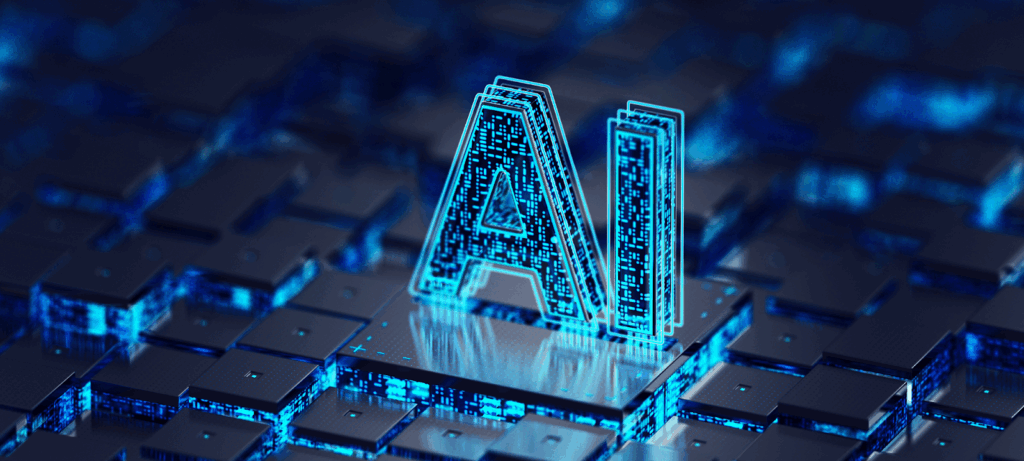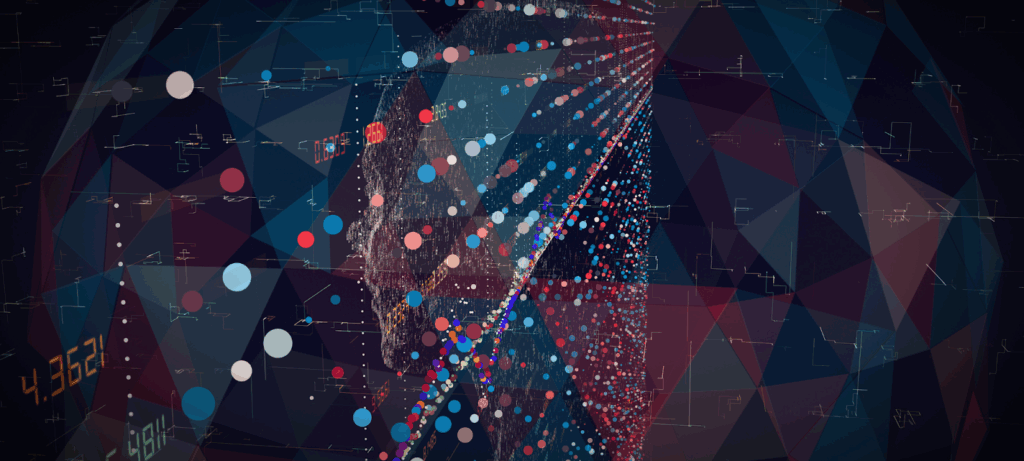
Cyber Threats in the Age of Artificial Intelligence
The rapid advancement of artificial intelligence (AI) has transformed nearly every industry — and cybersecurity is no exception.
While AI brings powerful opportunities for innovation, automation, and efficiency, it has also introduced new risks by giving attackers advanced tools to launch more effective and sophisticated cyberattacks.
As organizations navigate this landscape, they must recognize the reality of evolving cyber threats and adapt their defenses to keep pace with these continuously changing risks.
Traditional security teams already face a growing wave of cyber threats, from ransomware to phishing campaigns.
Now, AI-driven attacks add a new dimension of complexity. Using algorithms, automation, and generative AI, attackers can analyze vast amounts of data, identify system vulnerabilities, and execute attacks at machine speed.
For organizations of all sizes, this shift represents a significant threat to sensitive data, business continuity, and customer trust.
Staying secure requires more than traditional defenses — it demands a proactive strategy that understands and counters the evolving role of AI in cybercrime.

The Rise of AI-Powered Attacks
Cybercriminals are increasingly turning to AI-powered attacks to outpace traditional defenses.
By leveraging advanced algorithms, malicious actors can automate reconnaissance, generate highly targeted phishing attacks, and even create AI-powered malware capable of adapting to different environments.
Some of the ways AI is used by attackers include automating the collection of information about potential victims, crafting convincing spear-phishing emails, and developing malware that can evade detection.
Unlike traditional methods that rely on pre-built attack scripts, AI-driven attacks are dynamic.
They can evolve in real time, learning from failed attempts and quickly adjusting tactics to bypass traditional security measures. This makes them far more difficult to detect and defend against than earlier forms of cybercrime.
For businesses, the rise of AI-powered cyberattacks represents a growing threat.
Attackers no longer need extensive manual effort to exploit vulnerabilities — instead, they can harness AI systems to identify weaknesses across networks, applications, and digital assets at unprecedented speed and scale.
Additionally, attackers use AI to identify key targets within organizations, focusing their efforts on the most valuable assets or individuals.
The result is an environment where security professionals must constantly adapt, integrating their own AI-powered tools to keep pace with this new generation of attacks.

Understanding AI-Powered Cyberattacks
AI-powered cyberattacks represent a fundamental shift in the way threats are designed and deployed. Unlike traditional malware, which often follows static attack patterns, AI-driven threats use adaptive algorithms to modify behavior and evade detection.
For example, attackers can use AI models to enhance phishing attacks, generating highly personalized emails that mimic legitimate communication styles, making them more convincing and harder for both users and traditional defenses to identify.
Similarly, AI-generated malware can alter its code dynamically, bypassing traditional security tools that rely on signatures or predefined rules.
These ai powered cyberattacks analyze vast amounts of data in real time, spotting vulnerabilities faster than human attackers ever could.
They can exploit weaknesses at scale, orchestrate sophisticated cyberattacks, and launch highly targeted attacks tailored to specific organizations, industries, or even individuals.
For businesses, understanding how these attacks work is the first step toward building defense strategies that can keep pace with an increasingly automated threat landscape.
AI-Powered: Changing the Speed and Scale of Cybercrime
One of the most dangerous aspects of AI-powered cyberattacks is their ability to operate at machine speed and scale.
Unlike human-driven attacks, which may take days or weeks to plan and execute, AI-powered tools can launch thousands of attempts simultaneously, probing networks, applications, and endpoints for weaknesses.
By analyzing vast amounts of data in real time, these systems identify vulnerabilities, exploit system weaknesses, and execute attack strategies with incredible precision.
AI algorithms enable attackers to adapt on the fly, altering tactics whenever defenses are detected, allowing them to bypass security measures and making them increasingly difficult to stop.
This acceleration has raised the stakes for businesses of all sizes. Traditional security measures designed for static, slower-moving threats struggle to keep pace with the speed and sophistication of AI-driven threats.
For organizations, this means even minor vulnerabilities can quickly become points of entry, putting sensitive data and digital assets at risk.
To defend against this shift, security teams must embrace their own AI-enabled defenses and adopt proactive monitoring that matches the speed of these evolving threats.

AI-Generated Malware: Smarter, More Dangerous Threats
AI is rapidly transforming malware development by enabling attackers to create more sophisticated and evasive threats using advanced generative AI tools and large language models.
The development of AI-generated malware marks a turning point in cybersecurity. Unlike traditional malware, which typically follows predictable attack patterns, AI-generated code can rewrite itself, disguise malicious activity, and continuously adapt to evade detection.
By leveraging generative AI, attackers can create malware that bypasses traditional security tools, blends into normal network activity, and adjusts its tactics in real time.
This makes it increasingly difficult for cybersecurity systems to recognize and neutralize threats using conventional methods.
Examples include AI-powered malware that enhances phishing campaigns with highly personalized phishing emails, or ransomware variants that intelligently change encryption strategies to frustrate incident response plans.
These capabilities give malicious actors powerful ways to exploit vulnerabilities while avoiding traditional threat detection.
For businesses, the rise of AI-generated attacks represents a significant threat to sensitive data and critical systems. Countering these evolving threats requires advanced defense strategies and the adoption of AI-powered cybersecurity tools designed to detect anomalies beyond known signatures.

Artificial Intelligence in the Hands of Threat Actors
While artificial intelligence offers immense benefits for businesses, it also provides powerful capabilities for threat actors.
Cyber criminals are leveraging AI tools to automate reconnaissance, identify system vulnerabilities, and create highly targeted attacks that traditional defenses struggle to stop.
AI enables attackers to generate sophisticated cyberattacks that combine multiple attack vectors, from social engineering tactics to phishing attacks enhanced with natural language processing.
AI-powered chatbots, for example, can impersonate customer service agents or executives to trick employees into sharing sensitive data.
Additionally, ai powered malware can adapt to evade detection, while ai models allow attackers to simulate different defense environments, learning how to bypass them before launching real-world campaigns.
This ability to evade detection at scale makes ai enabled cyberattacks a significant threat to organizations of all sizes.
For security professionals, the challenge is clear: defending against adversaries who now wield the same AI capabilities once considered exclusive to legitimate cybersecurity tools.

AI-Enabled Cyberattacks and AI Agents
A new frontier in cybercrime is the use of AI-enabled cyberattacks powered by autonomous AI agents. These agents can operate independently, continuously learning from their environment and adjusting tactics without direct human intervention.
Unlike static attack scripts, AI agents can analyze vast amounts of data, identify new attack vectors, and launch highly targeted attacks tailored to specific industries, organizations, or even individual users.
Their ability to adapt in real time makes them far more effective than traditional malware campaigns.
For example, ai driven cyberattacks using autonomous agents can combine social engineering techniques, phishing attacks, and vulnerability exploitation in coordinated campaigns that unfold faster than human defenders can respond.
The ongoing battle between attackers and defenders grows more complex as these agents become more sophisticated.
For businesses, this represents a growing threat that requires equally adaptive defenses. Security teams must integrate AI-powered tools, anomaly detection, and continuous monitoring to identify and neutralize malicious AI agents before they can compromise digital assets.
Attackers are also beginning to target AI systems directly, making it essential to protect AI infrastructure from being compromised.

The Expanding Risk of AI-Driven Cyberattacks
The rise of AI-driven cyberattacks introduces risks that are broader and more complex than ever before. Unlike traditional malware, which typically follows predictable attack paths, AI-driven threats can evolve dynamically, making them increasingly difficult to identify and contain.
For organizations, this creates significant challenges. Attackers can exploit system vulnerabilities faster, use ai powered tools to evade detection, and scale attacks across global infrastructures in ways that overwhelm traditional security measures.
The combination of automation, speed, and adaptability turns AI-driven campaigns into a growing threat that security teams must take seriously.
The consequences extend beyond technical disruptions. A successful AI-powered attack can compromise sensitive data, interrupt business operations, and damage customer trust.
With cyber criminals adopting advanced AI algorithms and generative AI, the threat landscape continues to expand in both scale and sophistication.
To reduce exposure, organizations must accept that ai driven threats are not hypothetical — they are an active and evolving danger that demands immediate investment in smarter defense strategies.

AI Agents vs. Traditional Cybersecurity Tools
Traditional cybersecurity tools — such as firewalls, antivirus software, and intrusion detection systems — were built to defend against traditional malware and known attack patterns. While still valuable, these solutions often fall short when facing AI-driven cyberattacks.
Autonomous AI agents can adapt faster than static defenses, learning how to bypass filters, change tactics mid-attack, and exploit vulnerabilities that traditional security tools may miss.
For example, ai powered malware can rewrite its code to avoid detection, while ai powered chatbots can manipulate employees into sharing sensitive data through convincing social engineering techniques.
This mismatch creates a dangerous gap. Security professionals relying solely on legacy defenses may find it increasingly difficult to counter modern AI-enabled threats.
To close this gap, organizations must integrate ai powered tools of their own, combining advanced analytics, machine learning, and proactive monitoring to counteract evolving adversarial techniques.
The reality is that the ongoing battle between attackers and defenders is no longer human versus human — it’s AI versus AI.
Defense Strategies Against AI-Powered Threats
Countering AI-powered cyberattacks requires more than patching vulnerabilities — it demands a layered, adaptive approach.
Since attackers now leverage AI systems to bypass traditional security measures, businesses must implement forward-looking defense strategies designed to match the speed and intelligence of adversaries.
Key approaches include:
- AI-Powered Defenses: Leveraging machine learning and anomaly detection to spot suspicious activity and stop attacks before they escalate.
- Vulnerability Management: Continuously scanning for and addressing system vulnerabilities that could be exploited by ai driven threats.
- User Behavior Analytics: Monitoring patterns to identify anomalies such as highly personalized phishing emails or unusual login activity.
- Incident Response Plans: Developing response strategies tailored for ai powered attacks, ensuring faster containment and recovery.
- Security Awareness Training: Preparing employees to recognize social engineering tactics enhanced by AI, reducing the risk of human error.
By combining advanced technology with strong policies and education, organizations can build resilience against the growing threat of ai driven cyberattacks and protect their most valuable digital assets.

Cybersecurity Tools for Fighting AI-Driven Cyberattacks
To defend against AI-driven threats, organizations must evolve beyond traditional security tools and adopt next-generation solutions designed to detect and respond at machine speed.
Modern cybersecurity tools harness the same AI capabilities used by attackers, turning them into powerful weapons for defense.
Key technologies include:
- AI-Powered Threat Detection: Platforms that analyze vast amounts of data to identify anomalies, spot suspicious activity, and detect ai generated attacks in real time.
- Endpoint Detection and Response (EDR): Tools that monitor endpoints continuously, preventing ai powered malware from spreading across networks.
- Automated Vulnerability Management: Systems that prioritize and patch system vulnerabilities before cyber criminals can exploit them.
- Generative AI Defenses: Defensive applications of generative AI to simulate attack strategies, test defenses, and stay one step ahead of attackers.
- Advanced SOC Platforms: Security operations centers powered by machine learning to enhance visibility, accelerate incident response plans, and neutralize emerging threats.
When deployed strategically, these tools allow security professionals to fight fire with fire — leveraging AI to identify, contain, and neutralize ai driven cyberattacks before they compromise sensitive data or critical infrastructure.

Response Strategies and Incident Planning for AI-Driven Attacks
Even with the most advanced defenses, organizations must prepare for the possibility of AI-driven cyberattacks slipping through. A strong incident response plan is critical for containing damage, restoring operations, and learning from each attack.
Key response strategies include:
- Real-Time Monitoring: Continuous visibility to detect suspicious activity and stop attacks before they escalate.
- Automated Containment: Using AI-powered tools to isolate compromised systems and prevent lateral movement across networks.
- Playbooks for AI-Powered Attacks: Tailored workflows that account for the speed and adaptability of ai enabled cyberattacks.
- Cross-Team Collaboration: Ensuring security professionals, IT, and leadership work together seamlessly when a breach occurs.
- Post-Incident Analysis: Reviewing attack vectors, ai algorithms used, and system vulnerabilities to strengthen defenses against future attempts.
Organizations that prepare comprehensive incident response plans are better positioned to stay resilient against ai driven threats.
By combining automation, proactive planning, and skilled teams, businesses can restore normal operations faster and reduce the impact of sophisticated cyberattacks.
Staying Ahead of Evolving AI-Driven Threats
The rise of AI-driven cyberattacks signals a turning point in the ongoing battle between attackers and defenders. As threat actors adopt more advanced ai powered tools, organizations must embrace equally sophisticated defenses to stay ahead of this growing threat.
Future-ready defenses will rely on a combination of artificial intelligence, advanced analytics, and proactive monitoring.
By leveraging machine learning, cybersecurity professionals can identify anomalies, anticipate emerging threats, and strengthen defenses before attacks escalate.
Collaboration across industries, continuous testing, and shared threat intelligence will also play a critical role in building resilience.
For businesses of all sizes, success comes from adopting a layered defense strategy, investing in cybersecurity tools, and updating incident response plans to account for the speed and adaptability of ai driven threats.
The reality is clear: AI has changed the rules of cybersecurity. Organizations that adapt now will be better equipped to protect their sensitive data, safeguard digital assets, and maintain business continuity in the face of increasingly difficult challenges.
Strengthen Your Cybersecurity with IMS Cloud Services
The rise of AI-driven cyberattacks has made it increasingly difficult for businesses to rely on traditional defenses alone. Protecting your organization requires proactive planning, adaptive security measures, and expert guidance.
IMS Cloud Services helps organizations build smarter, AI-ready defenses to safeguard sensitive data, protect critical systems, and stay one step ahead of evolving threats.



Over 25 years of expertise in disaster recovery, backup, and security — partnering with your IT team to keep your business running.